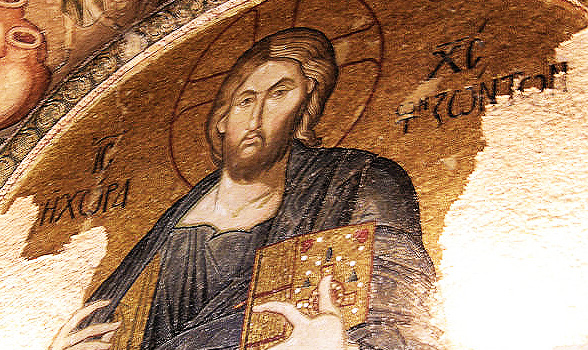Kariye Camii is the best sample we have of late Byzantine art
Byzantine Renaissance
The Moslem followers of Mohammed the Conqueror who triumphantly stormed Constantinople in 1453 were so successful in covering up all traces of Christianity that for almost five centuries Byzantine art—once the glory of Eastern Christendom—could be judged only through the examples that survived outside the Moslem world. Then, in 1935, Turkey’s Kemal Ataturk declared Istanbul’s Church of St. Sophia a historical monument, and cleared the way for Western experts to remove the plaster and paint that pious, iconoclastic Moslems had daubed over the great Christian mosaics. Since then each fragmentary restoration has added new proof of the power and achievement of Byzantine religious art between the 4th and 15th centuries A.D.
Five years ago a task force financed by Boston’s Byzantine Institute carefully eyed the walls in another Istanbul church, Kariye Camii, rebuilt on an older structure in the early 14th century and later converted into a mosque. With official blessing, the restorers went to work, soon realized that they had found a new jewel case of Byzantine art. With the job only three-fourths completed, their most significant find has been a set of 18 mosaic panels depicting the life of the Virgin Mary. Says Professor Paul A. Underwood, field director of the Istanbul project, who this week reports on the restoration work to the World Byzantine Congress in Istanbul: “Kariye Camii is the best sample we have of late Byzantine art.”
Kariye Camii was rebuilt in the early 1300s as a monastery church within Constantinople’s mighty walls, at the order of a wealthy courtier, Theodore Metochites. All evidence indicates that the church was decorated by mosaic masters who were buoyed up by the same fresh new breeze of discovery that in the West heralded the first stirrings of the Renaissance. Into the rigid Byzantine forms that had governed Eastern religious art for almost a thousand years, Byzantine artists poured a new warmth drawn from revived classic models.
For subject matter they turned to the Apocryphal New Testament for scenes from the life of Mary. One of the best preserved panels (see color page) shows the child Mary installed as a handmaiden in the temple as a thanksgiving offering by her parents. According to the Apocryphal Book of James: “And Mary was in the temple of the Lord as a dove that is nurtured; and she received food from the hand of an angel.” To portray Mary the artist used gentle modulations of beige, blue and gold, which achieve the soft tones of tempera painting. Little effort was made to indicate perspective, but the turning movement of the figures, the flowing robes of Mary and her handmaiden and the swirling movement of the angel break away from the stiff formalism of earlier Byzantine art.
In Italy this refreshed, humanized vision was carried one step further by Giotto, who incorporated into Western art the nobility of classic models. But in the East, with the growing threat of invasion looming over Constantinople, Byzantine art recoiled into familiar formalism. The murals of Kariye Camii stand revealed as the high point of Byzantine humanism, possibly the last great testimony of Byzantine art in its final flowering.
Monday, Sep 12, 1955 – Time



